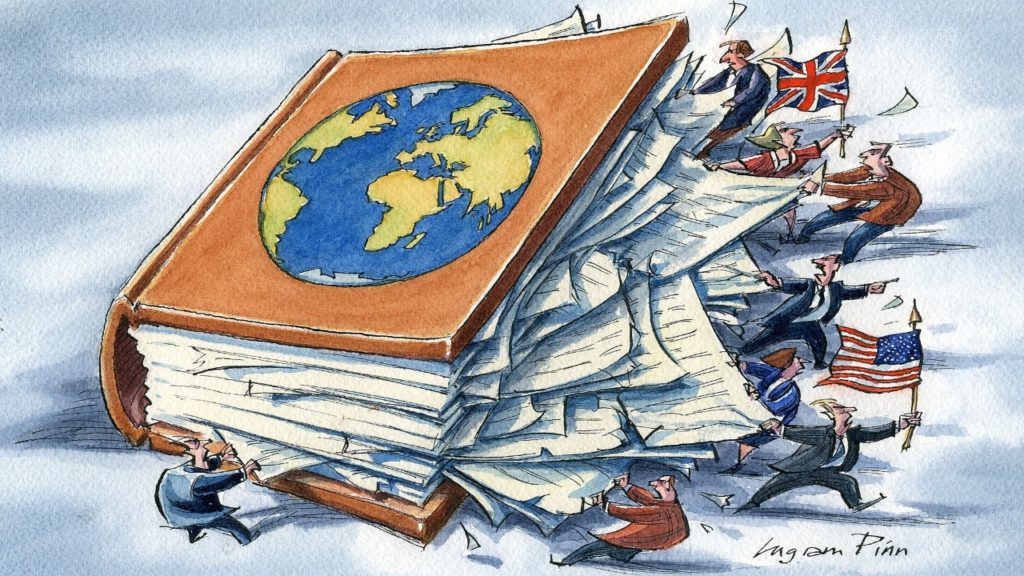
How does one categorize the Indian foreign policy approach? Does India follow a Liberal Paradigm? Does it fit into the Realist School’s explanation of foreign policy behavior of nations? Scholars and students of international relations always seek to explain the foreign policy behavior of nations on the basis of two dominant theories of international relations studies—Realist Theory and the Liberal Theory.
Actually, like all theoretical explanations of foreign policy behavior of nations, no theory can explain all phenomena. Moreover, there are several shades of Liberal and Realist theories. In the absence of any widely accepted set of assumptions by either the Liberal School or the Realist School and major scholarly differences over diverse aspects of theoretical explanations, students of IR often become confused.
One broad understanding that one can have is that the Liberal Theory does not confine its explanation of international relations to major powers’ behavior, whereas Realist Theory basically deals with major powers. Liberalism emphasizes cooperation and Realism underlines balance of power. Liberalism explains why States aim at achieving peace and prosperity through bilateral and multilateral cooperation, whereas Realism explains why States struggle for power and influence and seek to maintain the balance of power to ensure peace in the international system.
On the basis of these broad parameters of Liberalism and Realism, if one seeks to explain the behavior of any State, including the major powers or even the superpowers, it becomes clear that all States adopt various Liberal and Realist measures in diverse set of combinations from time to time and depending upon the circumstances and scenarios within the State and in the external world. For instance, a particular leader or a political party may prefer liberal approach to international events in a given State, but change of leadership in that State may also lead to change in approach.
Taking the above context further, it needs to be emphasized that the United States often takes pride in its role in the creation of a “Liberal World Order.” But many American IR pundits explain how some American Presidents have adopted the prescription of Realist School of Theories in conducting foreign policy and pursuing national security policies. What does it mean? It simply means that the US foreign policy behavior and actions can be explained both in terms of Liberal Theory as well as Realist Theory. Similar is the case with the former Soviet/current Russian foreign policy behavior. Same can be said in explaining China’s foreign policy.
In the light of above arguments, one can seek to analyze and explain Indian foreign policy behavior as well. Soon after the World War II, when the Western countries under the US leadership established some international institutions, such as the United Nations, the World Bank and the IMF to shape a liberal world order, India by and large participated in the efforts to promote that order. But when the Cold War began and spread across continents and the former Soviet Union took steps to create its version of an international order, India neither joined the American bloc nor the Soviet bloc. By promoting the concept of non-alignment and subsequently leading the Non-Aligned Movement, India actually took steps to create a third order in the international system. The Non-Aligned Order found faults with both the Western Liberal Order and the Oriental Socialist Order, as neither of them aimed at protecting and promoting the interests of a large number of Newly Independent States.
In order to champion the cause of the developing world India played the leadership role in calling for the establishment of a New International Economic Order (NIEO) and a New International Information Order (NIIO). By being part of the group of 77, India also sought to promote its own version of liberal order in international negotiations over trade, investment and labor rules. Significantly, India did not actively worked against the Liberal or the Socialist Order and rather sought reforms in those orders to safeguard the interests of the marginalized and smaller States.
Significantly, India’s approach in foreign policy was not confined to promoting its version of liberal order. Given the grim realities of inter-State relations, India from its very birth aspired for a Great Power status. Like all major powers, it sought to acquire as much military power as possible within the means available. Learning from the wars it fought with its neighbors, particularly China and Pakistan, and understanding that it must acquire more military prowess for its survival and prosperity, India marched towards and reached the goal of becoming a nuclear, missile and conventional power.
The challenges of the 21st century, marked by the current relative retreat by the United States from global engagements, unprecedented expansion of Chinese influence in the Indo-Pacific region, Russia’s distance from the Indo-Pacific region and the EU’s inability to impact the outcome of developments in this region, India is clearly seeking a balance of power that would maintain peace in the region, ensure India’s peaceful growth and provide stability to the regional system. To that extent, Indian foreign policy can be explained in terms of Realist Paradigm as well.
While one can argue that India’s march has been from a liberal road to a realist road, there were not many leading countries in the developing world that sought to establish a third order in the world, alongside the Western Liberal and Eastern Socialist Order. Currently, there seems to be no particular order in the world. The US is trying to protect a fast disintegrating Liberal Order, China is working hard to create a Sino-Centric Regional Order. India is keenly watching these developments. An effort to create a smarter polycentric order may be in the offing. It is yet to be visible.
![]()

